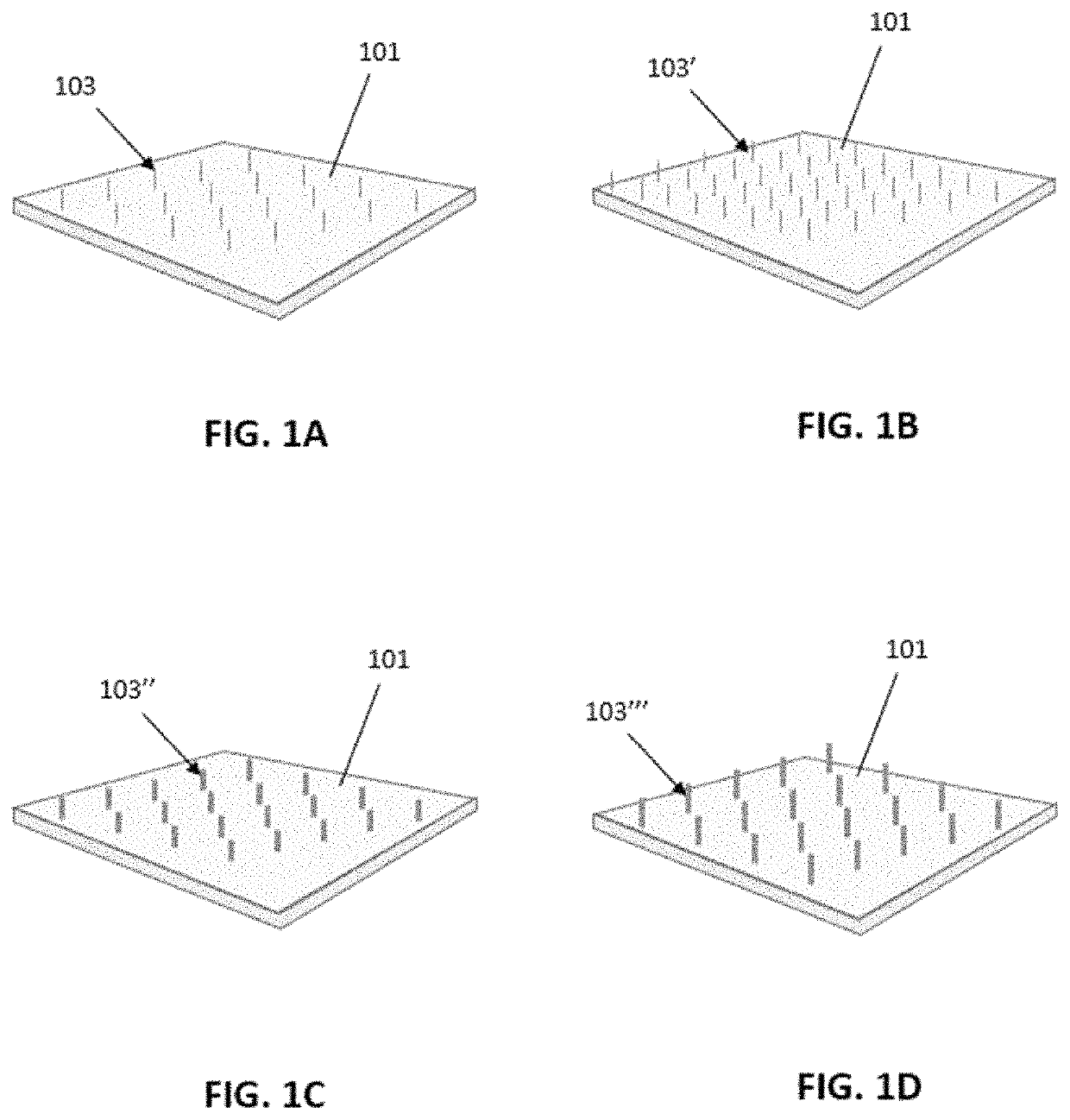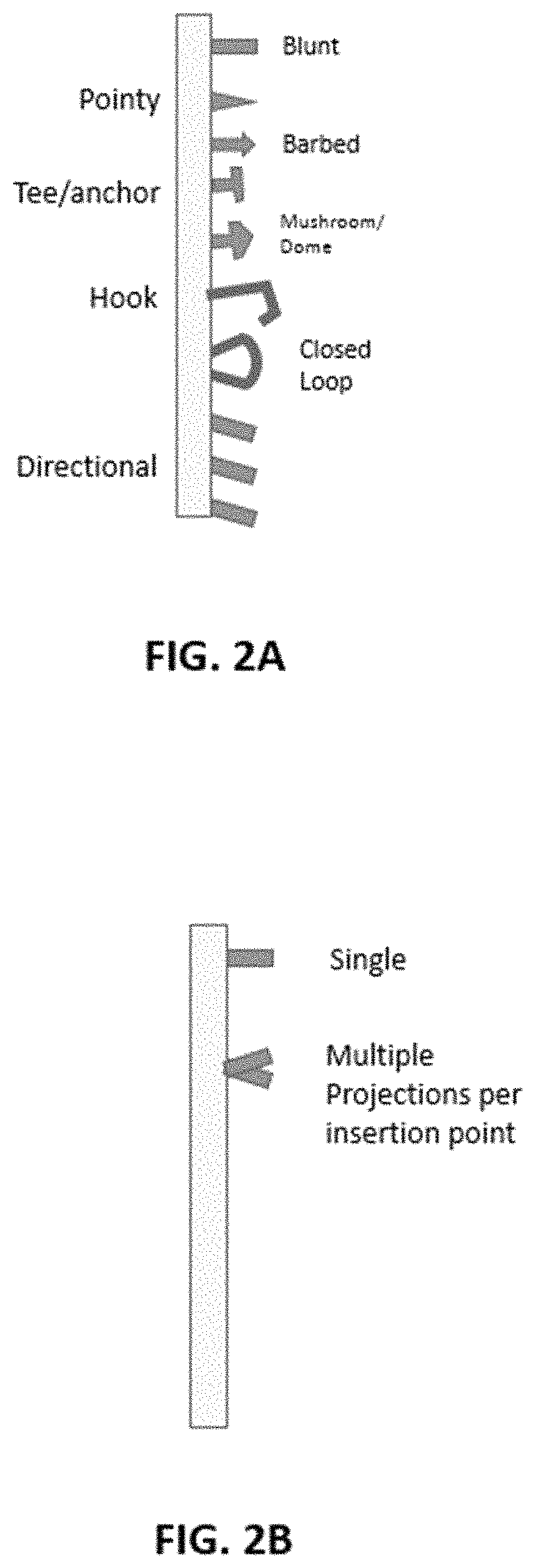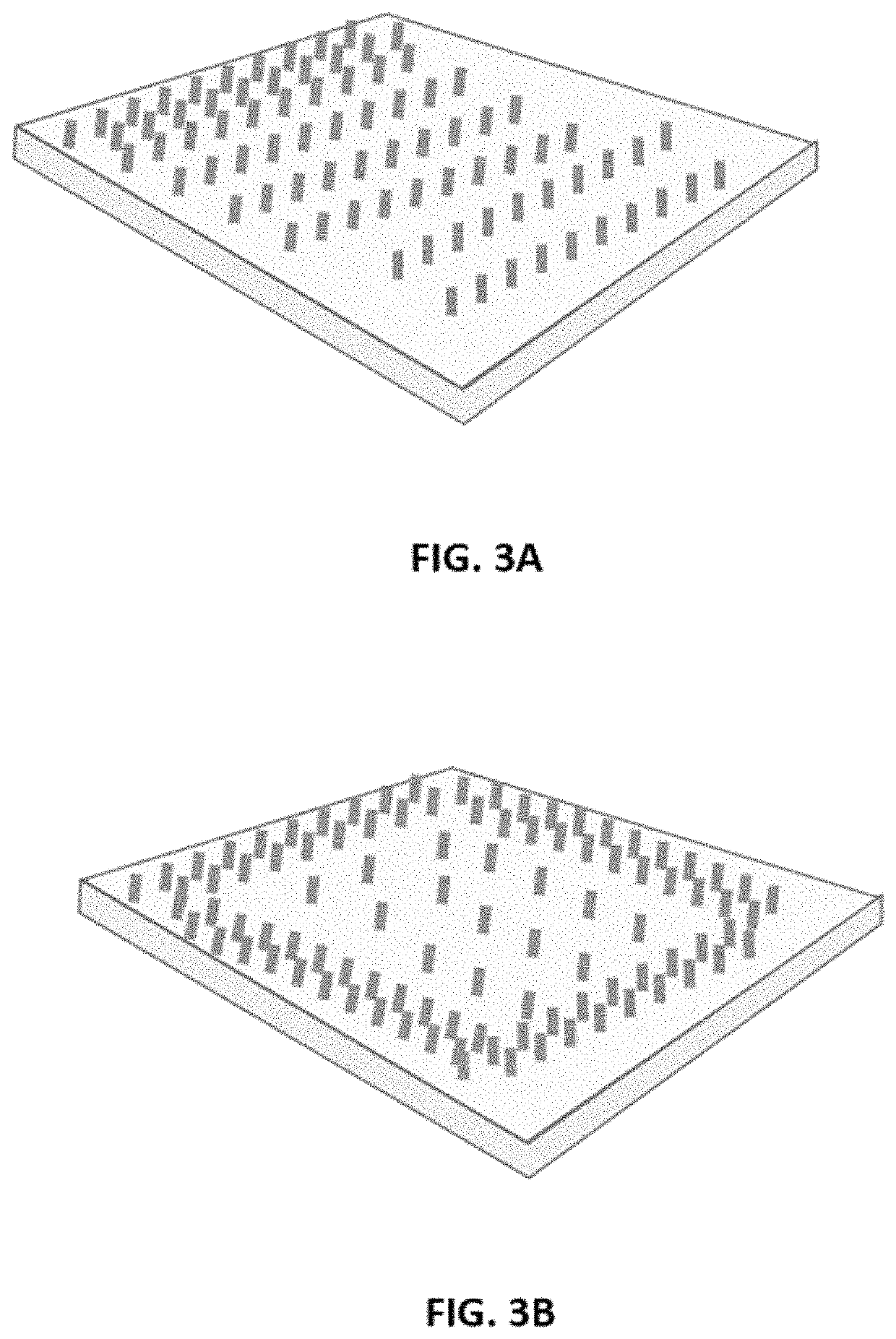Textured medical textiles
a technology of medical textiles and textiles, applied in the field of textured medical textiles, can solve the problems of hernia repair surgery, pain, obstruction, bleeding, fluid build-up, etc., and achieve the effects of improving the quality of li
- Summary
- Abstract
- Description
- Claims
- Application Information
AI Technical Summary
Benefits of technology
Problems solved by technology
Method used
Image
Examples
Embodiment Construction
[0072]Described herein are implants including medical textiles (e.g., biotextiles), that include a substrate into which stitching material (e.g., filament, collection of filaments, etc.) are sewn and formed into a pattern of gripping strands (e.g., projections, loops, tufts, etc.) that extend from the surface of the medical textile / biotextile. Implant may also include one or more compliance control patterns stitched into the substrate. The gripping strands may increase the grip strength of the implant.
[0073]Any of the implants (e.g., medical textiles / biotextiles) described herein may be configured as a surgical implant structure, or may be included as a surgical implant material. For example, any of these medical textiles / biotextiles may be configured as a surgical repair graft devices. A surgical repair graft as described herein may be useful for supporting or repairing a body tissue such as for breast reconstruction, hernia repair, pelvic organ prolapse treatment, and so forth. In...
PUM
| Property | Measurement | Unit |
|---|---|---|
| tilt angle | aaaaa | aaaaa |
| diameter | aaaaa | aaaaa |
| diameter | aaaaa | aaaaa |
Abstract
Description
Claims
Application Information
 Login to View More
Login to View More - R&D
- Intellectual Property
- Life Sciences
- Materials
- Tech Scout
- Unparalleled Data Quality
- Higher Quality Content
- 60% Fewer Hallucinations
Browse by: Latest US Patents, China's latest patents, Technical Efficacy Thesaurus, Application Domain, Technology Topic, Popular Technical Reports.
© 2025 PatSnap. All rights reserved.Legal|Privacy policy|Modern Slavery Act Transparency Statement|Sitemap|About US| Contact US: help@patsnap.com



